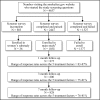Five population-based interventions for smoking cessation: a MOST trial
- PMID: 25584087
- PMCID: PMC4286555
- DOI: 10.1007/s13142-014-0278-8
Five population-based interventions for smoking cessation: a MOST trial
Abstract
Little is known about the relative, additive, and interactive effects of different population-based treatments for smoking cessation. The goal of this study was to evaluate the main and interactive effects of five different smoking interventions. Using the multiphase optimization strategy (MOST), 1,034 smokers who entered a Web site for smokers (smokefree.gov) were randomly assigned to the "on" and "off" conditions of five smoking cessation interventions: the National Cancer Institute's (NCI) Web site (www.smokefree.gov vs a "lite" Web site), telephone quitline counseling (vs none), a smoking cessation brochure (vs a lite brochure), motivational e-mail messages (vs none), and mini-lozenge nicotine replacement therapy (NRT vs none). Analyses showed that the NCI Web site and NRT both increased abstinence; however, the former increased abstinence significantly only when it was not used with the e-mail messaging intervention (messaging decreased Web site use). The other interventions showed little evidence of effectiveness. There was evidence that mailed nicotine mini-lozenges and the NCI Web site (www.smokefree.gov) provide benefit as population-based smoking interventions.
Keywords: MOST research; Nicotine replacement; Smoking cessation; Telephone quitline; Web site evaluation.
References
-
- World Health Organization . WHO global report: mortality attributable to tobacco. Geneva, Switzerland: WHO Press; 2012.
-
- Fiore MC, Jaen CR, Baker TB, et al. Treating tobacco use and dependence: 2008 update. Rockville, MD: U.S. Department of Health and Human Services, U.S. Public Health Service; 2008.
Grants and funding
LinkOut - more resources
Full Text Sources
Other Literature Sources
Medical


